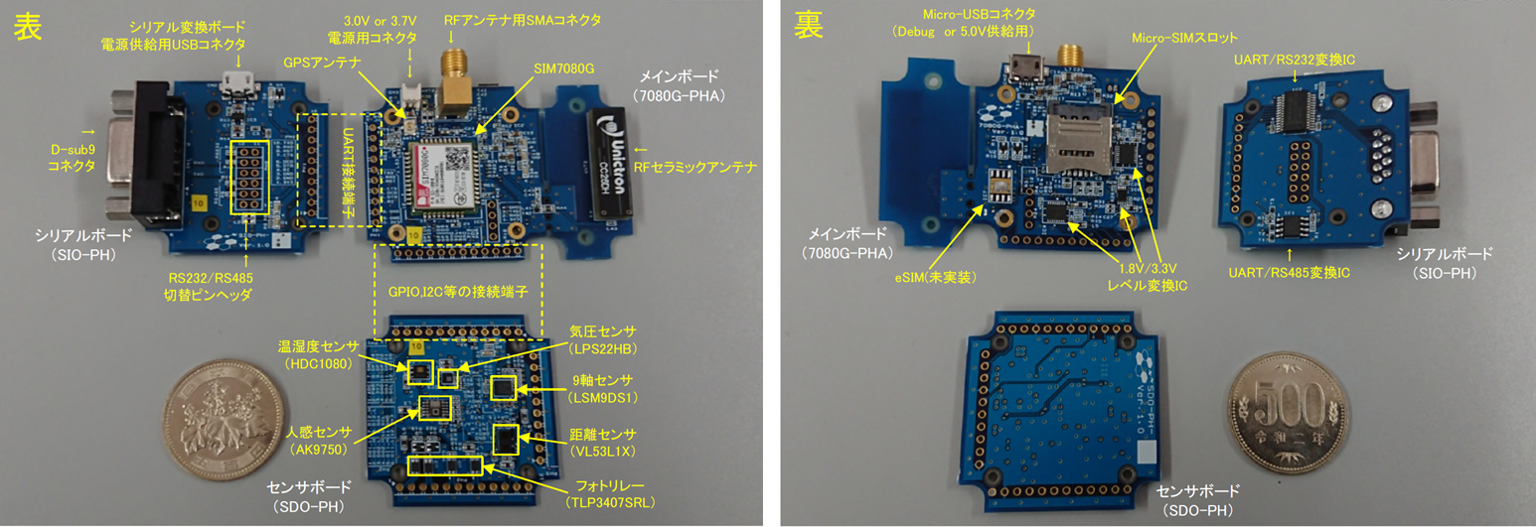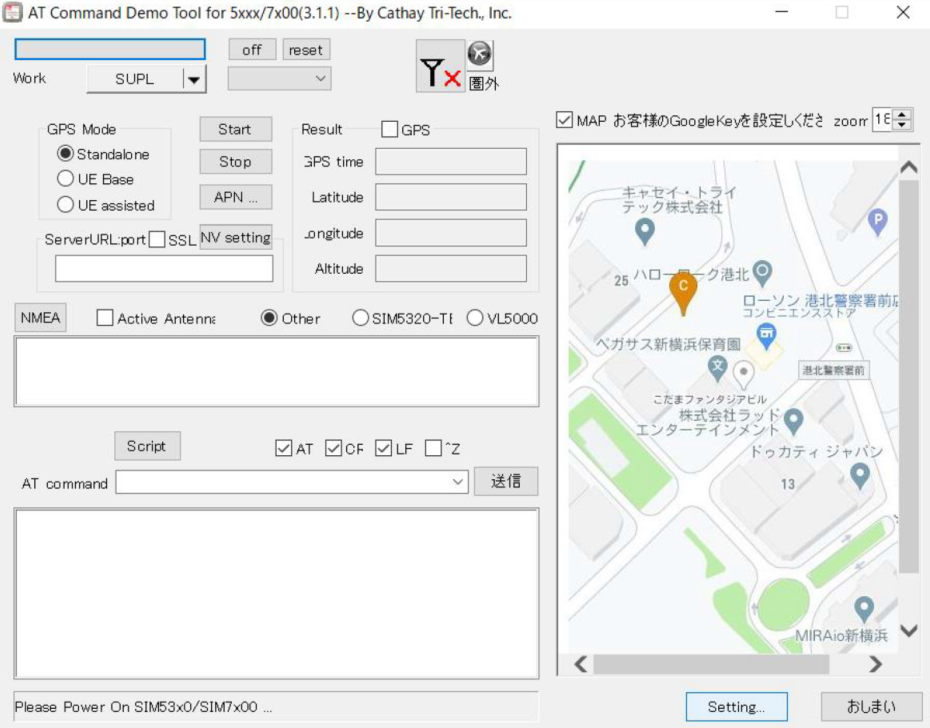What is Cellular LPWA?
Cellular LPWA is an LPWA technology that achieves low power consumption by keeping the data transfer rate and communication frequency low, based on LTE, which features long-distance communication mainly used in mobile phones. Cellular LPWA uses the communication network of LTE base stations already installed by telecommunications carriers, so it is possible to communicate on a dedicated frequency, so radio interference is less likely to occur, and a stable connection environment can be established. Since it can easily cover a wide area, it is being used in various situations by taking advantage of its characteristics.
LTE-M and NB-IoT
There are LTE-M and NB-IoT as main standards for cellular LPWA, each with the following characteristics. The main differences are communication speed, FOTA, and compatibility with mobility.
| LTE-M | NB-IoT | |
|
Maximum communication speed (Rel.14 theoretical value) |
UL 1Mbps DL 1Mbps |
UL 150kbps DL 136kbps |
| FOTA | ◯ | △ |
| Mobility Solutions | ◯ | △ |
Communication speed depends on network equipment. (Please refer to the bottom of the page for the product specifications of the SIM7080G featured on this page.)
FOTA and mobility are based on SIM7080G specifications.
[LTE-M]
The maximum communication speed is 1 Mbps (theoretical value) for each of UL and DL, making it a relatively high-speed standard among LPWA. It can be said that it is suitable for applications in which large amounts of data are exchanged at high frequency. In addition, FOTA, which enables remote system updates, and handover, which enables smooth switching when communicating across different base station areas when a terminal is moved, are also significant advantages.
[NB-IoT]
The maximum communication speed in Release 14 is UL 150kbps / DL 136kbps (theoretical value), which is slower than LTE-M. Due to its communication speed, it is not suitable for using FOTA because there is a risk of causing an error during update work or increasing power consumption. In addition, since it is assumed to be used in a fixed state, it is not compatible with mobility, making it impossible to communicate across multiple base stations. However, due to its simple function, it is possible to realize a more power-saving solution for applications where very small and infrequent data communication is sufficient.
Improving PoC Efficiency Using Cellular LPWA
PoC method is an issue when trying to introduce cellular LPWA. We often hear people say that they have a SIM card but don't have a communication terminal, or that they don't know what data to handle. In order to respond to such problems, this time we would like to introduce the communication board 7080G-PHA IoT Modem Board released by Cathay Tritech. This product is a board equipped with SIMCom's SIM7080G that supports cellular LPWA, and you can use it just by preparing a SIM card. In addition to communication boards, we also provide sensor boards equipped with multiple types of sensors, enabling operation in various situations without narrowing down the application.
We provide the software "AT Demo Tool" that enables USB communication with the 7080G-PHA IoT modem board and operation using AT commands, so you can easily evaluate it on your PC.
7080G-PHA IoT Modem Board
Product features
・Compatible with Cat-M1/NB1/NB2 based on Rel.14, equipped with two domestic carrier certifications and a global module that can be used overseas
・Built-in cellular & GPS antenna with ultra-compact shape that can be equipped with various sensors and can immediately conduct IoT experiments
・Support RS232C/485 serial port by expansion board
・Equipped with pin terminals that can be directly connected to each function port of the module
・Dry battery drive is possible with ultra-low voltage design
・Required functions can be selected with a configuration of 3 PCBs
・Compatible with MicroSIM card (3FF), eSIM (built-in/external), and SoftSIM
・Equipped with RTOS (TX3.0), Edge processing and external control operation using the memory area in the module are also possible.

Hardware configuration
■ Various connectors
External power supply terminal, SMA terminal for external LTE antenna, uFL connector for GNSS, MicroUSB terminal, MicroSIM slot
■ LTE chip antenna installed
■ External interface
UART, GPIO, I2C, ADC
■ Compatible with various sample sensors
Temperature/humidity, barometric pressure, distance, human, motion sensor (9 axes)
Product Specifications
| Band (Global) | B1/B2/B3/B4/B5/B8/B12/B13/B14/B17/B18/ B19/B20/B25/B26/B27/B28/B39/B66/B85 |
| LTE category | LTE-M (DL/589kbps, UL/1,119kbps) NB1 (DL/34kbps , UL/66kbps) NB2 (DL/136kbps , UL/150kbps) |
| Size | Approximately 50mmx50mmx15mm (excluding main board and antenna) |
| GPS | GPS (Cat-M1 recommended)/A-GPS (operator option) |
| antenna | Built-in chip antenna x1, external SMA terminal x1 |
| SIM slot | MicroSIMx1, eSIM reserve port |
| interface | RS232C/485/USB2.0(MicroUSB), GPIO/UART/I2C/SPI/ADC/PCM |
| Operating environment | Temperature -10°C to 60°C, Humidity 25% to 85% |
| Storage environment | Temperature -30°C to 85°C, Humidity 25% to 85% |
| Operating voltage | DC2.7~4.8V |
| Power consumption (single module) |
LTE Cat-M1 Data Transmission Approx.120mA (FDD-B1,Typical) PSM mode Typical: 3uA |
| Compatible driver | Linux (ver2.6 or later) Windows (2000/XP/Vista/7/8/10, CE/Mobile) |
| Various certifications | TELEC/JATE : IoT (SoftBank/KDDI, other overseas carriers to be certified) |
AT Demo Tool

Inquiry / Quotation
If you have any questions about this product or would like a quote, please contact us here.
Cathay Tritech Manufacturer Information Top
If you want to return to Cathay Tritech Manufacturer Information Top, please click below.
